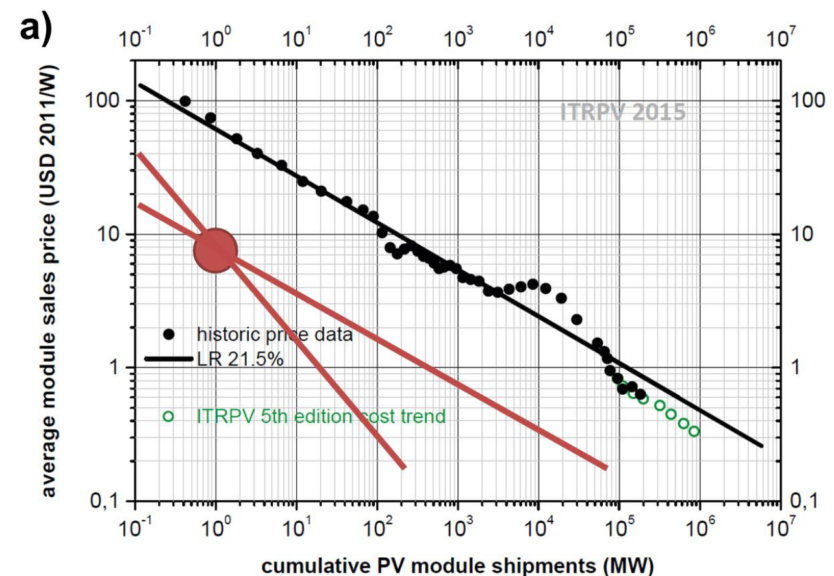Larry Lüer, Marius Peters, Ana Sunčana Smith, Eva Dorschky, Bjoern M. Eskofier, Frauke Liers, Jörg Franke, Martin Sjarov, Mathias Brossog, Dirk Guldi, Andreas Maier and Christoph J. Brabec
accepted for Joule, arXiv
The recent successes of emerging photovoltaics (PV) such as organic and perovskite solar cells are largely driven by innovations in material science. However, closing the gap to commercialization still requires significant innovation to match contradicting requirements such as performance, longevity and recyclability. The rate of innovation, as of today, is limited by a lack of design principles linking chemical motifs to functional microscopic structures, and by an incapacity to experimentally access microscopic structures from investigating macroscopic device properties. In this work, we envision a layout of a Digital Twin for PV materials aimed at removing both limitations. The layout combines machine learning approaches, as performed in materials acceleration platforms (MAPs), with mathematical models derived from the underlying physics and digital twin concepts from the engineering world. This layout will allow using high-throughput (HT) experimentation in MAPs to improve the parametrization of quantum chemical and solid-state models. In turn, the improved and generalized models can be used to obtain the crucial structural parameters from HT data. HT experimentation will thus yield a detailed understanding of generally valid structure-property relationships, enabling inverse molecular design, that is, predicting the optimal chemical structure and process conditions to build PV devices satisfying a multitude of requirements at the same time. After motivating our proposed layout of the digital twin with causal relationships in material science, we discuss the current state of the enabling technologies, already being able to yield insight from HT data today. We identify open challenges with respect to the multiscale nature of PV materials and the needed volume and diversity of data, and mention promising approaches to address these challenges.

Larry Lüer, Marius Peters, Ana Sunčana Smith, Eva Dorschky, Bjoern M. Eskofier, Frauke Liers, Jörg Franke, Martin Sjarov, Mathias Brossog, Dirk Guldi, Andreas Maier and Christoph J. Brabec
accepted for Joule, arXiv
The recent successes of emerging photovoltaics (PV) such as organic and perovskite solar cells are largely driven by innovations in material science. However, closing the gap to commercialization still requires significant innovation to match contradicting requirements such as performance, longevity and recyclability. The rate of innovation, as of today, is limited by a lack of design principles linking chemical motifs to functional microscopic structures, and by an incapacity to experimentally access microscopic structures from investigating macroscopic device properties. In this work, we envision a layout of a Digital Twin for PV materials aimed at removing both limitations. The layout combines machine learning approaches, as performed in materials acceleration platforms (MAPs), with mathematical models derived from the underlying physics and digital twin concepts from the engineering world. This layout will allow using high-throughput (HT) experimentation in MAPs to improve the parametrization of quantum chemical and solid-state models. In turn, the improved and generalized models can be used to obtain the crucial structural parameters from HT data. HT experimentation will thus yield a detailed understanding of generally valid structure-property relationships, enabling inverse molecular design, that is, predicting the optimal chemical structure and process conditions to build PV devices satisfying a multitude of requirements at the same time. After motivating our proposed layout of the digital twin with causal relationships in material science, we discuss the current state of the enabling technologies, already being able to yield insight from HT data today. We identify open challenges with respect to the multiscale nature of PV materials and the needed volume and diversity of data, and mention promising approaches to address these challenges.